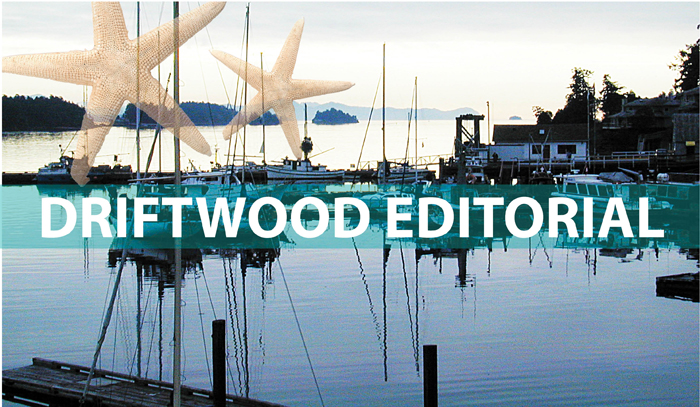As we head into the warmer months of the year, water is on the minds of many islanders.
That was evident in the past 10 days in a variety of places: at the Home & Garden Show, where rainwater collection technologies were showcased; at Islands Trust Council on Gabriola Island, where financial support was approved for both the Trust’s freshwater specialist position and the Salt Spring Island Watershed Protection Alliance; and at the North Salt Spring Waterworks District’s open house to present its strategic plan and answer questions from the public.
The NSSWD plan is clear, concise and a solid document for keeping the board and staff on track for the next four years.
As if running a water utility with 1,792 connections and maintaining several other island water systems on a contract basis was not a big enough job, the district’s strategic plan cites a number of items needing “immediate and urgent” attention. Those include completing water demand projections, holding a facilitated workshop to understand the risks of taking more water from St. Mary Lake, and developing and adopting a conservation policy and a conservation plan. Consultants are urgently needed to conduct a water supply options study and to design a new water treatment plant for Maxwell Lake. It’s a long to-do list and those are only some of the most urgent items.
Individuals and island institutions can help the cause by seriously evaluating their water consumption and reducing their demands on St. Mary and Maxwell lakes, especially in the drier months.
Perhaps the NSSWD could lead some kind of water-saving challenge, similar to BC Hydro’s Power Smart program, which rewards customers who sign up and reduce their consumption by 10 per cent in a 12-month period. The Transition Salt Spring Enterprise Co-op is now offering small loans to help islanders install rainwater catchment systems, which would contribute to achieving a specific conservation goal.
Visitor education about the importance of conserving water is another area that could be stepped up by governing bodies and tourism businesses.
As much as people might wish for a return to “normal” Gulf Islands weather that sees rainfall spread more evenly throughout the year, that is not expected to happen, and so we must all do the work required to adapt.


I think we are still overlooking a straight forward assist to the solution of water demand. Every new residence or commercial building should be required to incorporate holding tanks. We do have substantial rain seasonally, and roof-catchment is substantial.
Households in Australia used this effectively 50 years ago. Using very simple, ready to hand materials such as corrugated metal culvert pipes into which eavestroughs directed rainfall. This was used for gardens, clothes and car washes, and in many cases tea-making. It was far superior to the iron rich well water.
Worried about bird droppings? Just let the first rain wash through. Or, mount the tap two foot above the base of the tank.
In our enlightened state, we could surely adapt plastic tanks and filters and add flower covered berms for beautification. The cost would be minimal when constructing our homes, and the NSSWD or local governments need not carry an increased burden (which, in fact, the residents will have to cover one way or another.)